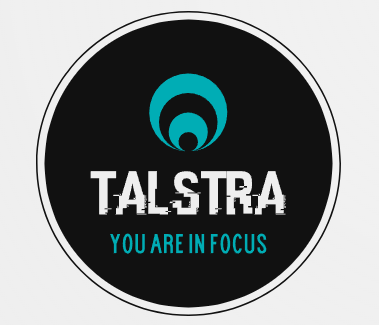Enhancing Your VB.NET App’s Appearance with XAML
Enhancing Your VB.NET App’s Appearance with XAML, Images, and Animation
If you’re using VB.NET with WPF (Windows Presentation Foundation), you can significantly improve your app’s appearance and storytelling depth using XAML for UI design, images for visual appeal, and animations for dynamic effects.
Customizing the App’s Appearance with XAML
1. Setting Backgrounds with Images
Instead of using solid colors, you can add a background image to create a more immersive experience.
Example: Set a Window Background Image
<Window Background="Black">
<Window.Background>
<ImageBrush ImageSource="assets/background.jpg" Stretch="Fill"/>
</Window.Background>
</Window>
This will fill the entire window with a background image.
2. Styling Text and UI Elements
Use fonts, colors, and opacity to make text elements stand out.
Example: Creating a Themed Title
<TextBlock Text="Mystic Adventure"
Foreground="Gold"
FontSize="36"
FontWeight="Bold"
FontFamily="Papyrus"
TextAlignment="Center"
Opacity="0.9"/>
🔹 Tip: Using a slightly transparent (Opacity) effect can give your UI a mysterious, glowing look.
3. Adding Animated Effects (Fade, Scale, and Slide)
Animations make the UI feel alive and engaging. You can animate text, images, and controls using Storyboard animations in XAML.
Example: Fade-In Animation for a Story Intro
<Window.Resources>
<Storyboard x:Key="FadeInText">
<DoubleAnimation Storyboard.TargetName="IntroText"
Storyboard.TargetProperty="Opacity"
From="0" To="1"
Duration="0:0:3"/>
</Storyboard>
</Window.Resources>
<Grid>
<TextBlock Name="IntroText" Text="A shadow moves in the dark..."
FontSize="24" Foreground="White" Opacity="0"
HorizontalAlignment="Center" VerticalAlignment="Center"/>
<Grid.Triggers>
<EventTrigger RoutedEvent="Grid.Loaded">
<BeginStoryboard Storyboard="{StaticResource FadeInText}"/>
</EventTrigger>
</Grid.Triggers>
</Grid>
🔹 This gradually fades in the text, creating a more immersive effect.
4. Adding Character Portraits and UI Animations
If your app involves storytelling or interactive elements, character images and animations help express emotions.
Example: Character Image with a “Pulse” Effect
<Image Name="CharacterPortrait"
Source="assets/hero.png"
Width="200" Height="300"
RenderTransformOrigin="0.5,0.5">
<Image.RenderTransform>
<ScaleTransform ScaleX="1" ScaleY="1"/>
</Image.RenderTransform>
<Image.Triggers>
<EventTrigger RoutedEvent="Image.Loaded">
<BeginStoryboard>
<Storyboard RepeatBehavior="Forever" AutoReverse="True">
<DoubleAnimation Storyboard.TargetProperty="RenderTransform.ScaleX"
From="1" To="1.1" Duration="0:0:2"/>
<DoubleAnimation Storyboard.TargetProperty="RenderTransform.ScaleY"
From="1" To="1.1" Duration="0:0:2"/>
</Storyboard>
</BeginStoryboard>
</EventTrigger>
</Image.Triggers>
</Image>
🔹 Effect: The character gently grows and shrinks, making them appear alive and breathing.
Adding Emotional Depth to Your Story
1. Use Dynamic Background Changes
Change the background based on emotions or story progression.
Example: Changing Background on an Event
<Window.Background>
<ImageBrush x:Name="SceneBackground" ImageSource="assets/sunny_forest.jpg"/>
</Window.Background>
<Button Content="Night Falls" Click="ChangeScene"/>
In VB.NET Code-Behind:
Private Sub ChangeScene(sender As Object, e As RoutedEventArgs)
SceneBackground.ImageSource = New BitmapImage(New Uri("assets/dark_forest.jpg", UriKind.Relative))
End Sub
🔹 Effect: When the button is clicked, the scene changes from a sunny forest to a dark and eerie one, setting the mood.
2. Use Character Expressions
Instead of keeping a static portrait, swap images to match emotions.
Example: Change Character Expression on Dialogue
<Image x:Name="CharacterFace" Source="assets/happy.png" Width="150" Height="150"/>
<Button Content="Make Angry" Click="ChangeExpression"/>
In VB.NET Code-Behind:
Private Sub ChangeExpression(sender As Object, e As RoutedEventArgs)
CharacterFace.Source = New BitmapImage(New Uri("assets/angry.png", UriKind.Relative))
End Sub
🔹 Effect: When the button is clicked, the character’s expression changes from happy to angry.
Bringing Everything Together
By combining images, animations, and UI customization, your VB.NET WPF app can become an engaging and visually immersive experience.
Final Tips: ✅ Use animations to make the UI feel dynamic.
✅ Change backgrounds and images to reflect mood shifts in the story.
✅ Apply font styles, opacity, and colors to emphasize emotions.



